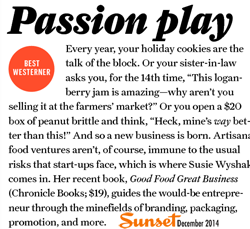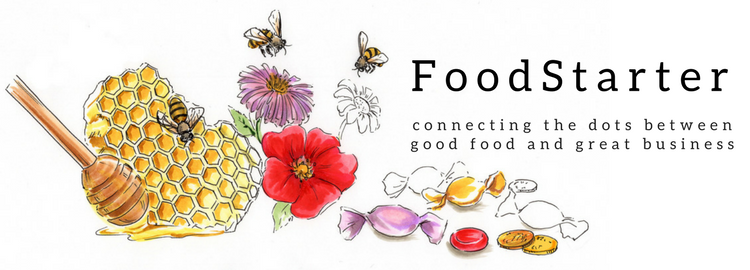The turkey breast had been in the pre-heated oven for 10 minutes when the oven crapped out. It was Christmas and 6 of us were ready to eat.
Luckily, we had planned a menu around minimal effort and, ironically, had one of the best Christmas dinners ever.
Perhaps as when the Bumpus’ dogs ate the turkey, in A Christmas Story, when you have a problem and solve it together there is more joy in the eating.
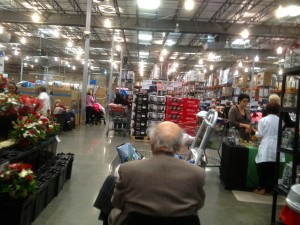
There’s something about Costco, like Trader Joe’s, that combines staples you can count on with the adventure of something new on each visit. Coupled with sampling, it’s an adventure. Sure, sometimes annoying, but sort of like that third-place that Starbucks hopes to be.
We were not the only family who had depended on a few popular grocers who now make up a big chunk of people’s food shopping habits.
Family favorite Costco is the largest organic food seller, as of 2015.
Costco is like my dad’s “third place.” Howard Schultz of Starbucks popularized this idea. The first place is home. Second place is work. The third place is a business that hopes you see them as core to your existence. That would describe Costco’s role in my dad’s life.
So whenever I visit dear old dad, a visit to Costco is pretty much at the top of his “to do” list. Even if he was there just a few days earlier.
If you haven’t been keeping up on this warehouse mega-store, it’s interesting to know that Costco is the biggest organic food seller in the United States (for now anyway).
In addition to organic food eaters getting a fix of bargain shopping, interesting wines and food samples, they’re loading up on mega packs of crackers, bags of organic sugar and organic produce.
For our “lazy Christmas dinner” we bought:
- a 4-pound, pre-cooked turkey breast — turning a blind eye to how that turkey’s breast got so big
- a huge bag of organic spinach (see below) – the funny thing is in the Bay Area, there are so many great places to buy fresh, farm-direct produce. But in LA, where we were eating, this bulk bagged produce is just so much easier.
- mixed nuts to stave off hunger
Trader Joe’s rounded out the Christmas dinner (as it does with most of our eating)
The topic of Trader Joe’s popularity is a subject unto itself, which I’ll be writing about separately. As you’ve heard or read about ad infinitum, they’ve nailed the formula for success — over many decades.
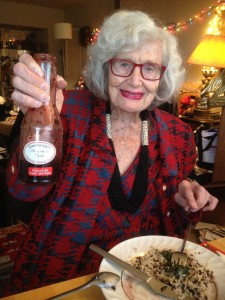
Between a pre-cooked turkey breast from Costco and bagged spinach, rice from Trader Joe’s and a delicious organic berry jam from Pennington Farms in Oregon, we enjoyed a delicious Christmas dinner with little preparation time.
For purposes of showing how our oven-less dinner synced with consumer trends in convenience, ready-to-eat, interesting, healthful foods, here’s a rundown of what we bought at Trader Joe’s for the luke-warm feast:
- A world-class lemon tart with a pate brisee crust rivaling any we had had in France (although maybe not rivaling this James Beard lemon tart recipe). Note that we are in California so we can rationalize a lemon tart as seasonal, as winter is citrus time!
- Mixed rice which was a big hit
- Olive oil
- 3-pack of soft goat cheese crottins, which are rounds of chevre
- Everything crackers, which are like everything bagel seeds but in a cracker
- Cave-aged blue cheese which is surprisingly good
- Wine and assorted other booze
The stove-top Christmas dinner
The turkey was lukewarm when the oven stopped working. Even though the wrapper said to heat up the turkey to some internal temperature, we decided that was more a pleasantry than to avoid a disease. Luckily we were right.
And luckily we had the burners to be able to wilt the spinach and cook the rice.
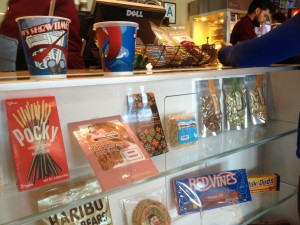
What to my wondering eyes did appear but organic specialty snacks and maybe some beer. All a the movie theater! Tailoring interesting snacks to a new generation of eaters who may not want the old style of candy or popcorn is a smart move.
By the time we served the meal we were full on cheese and crackers, but that didn’t stop everyone from enjoying the tepid, pre-cooked turkey breast and all of the other ready-to-eat food.
A bottle of organic berry jam from Oregon complemented the big-box turkey with small-batch flavor.
The lemon tart I am still craving.
The convenient eating and snacking trend is here to stay and crosses demographics.
Lots of articles and research studies focus on millennials as the folks wanting fast, healthful food options which they will buy anywhere, including convenience stores.
The Yuccies (young urban creative class consumers) may be using Instacart to get groceries delivered, and other delivery services for booze and whatever other creature comforts you might want at all hours. But we are also using Instacart and other sharing economy services for our aging relatives.
Proof is in all of the recent natural / specialty food company acquisitions by big food companies.
Proof is in all the new, interesting snacks you see at airport stores, gyms and in line at clothing stores.
A Consumer Reports survey of >1,000 U.S. women in October 2014 on grocery saving habits revealed some interesting responses.
The research goal was to learn how women try to save and where women prefer to shop.
- 93% buy store brands (like Whole Foods 365, Trader Joe’s and Kroger Private Selection)
- 84% buy prepackaged food, with 78% saying they also buy in bulk
- 78% shop at multiple stores, with 96% shopping at supermarkets as well as 91% at mega-stores. A whopping 81% said they shop at dollar stores.
A Nielsen report also found the Hispanic market equally obsessed with food convenience.
Sure someone is buying those meal kits-by-mail and enjoying the process of learning to cook through these kits. For the most part though, it’s amazing and awesome to have delicious, ready to heat and eat food (or food like our turkey that can be eaten without heating).
Any and every food business needs to be ahead of the ball and think convenience along with whatever other features and benefits you’re offering.
Did you like the family story? Please comment, share or let me know!
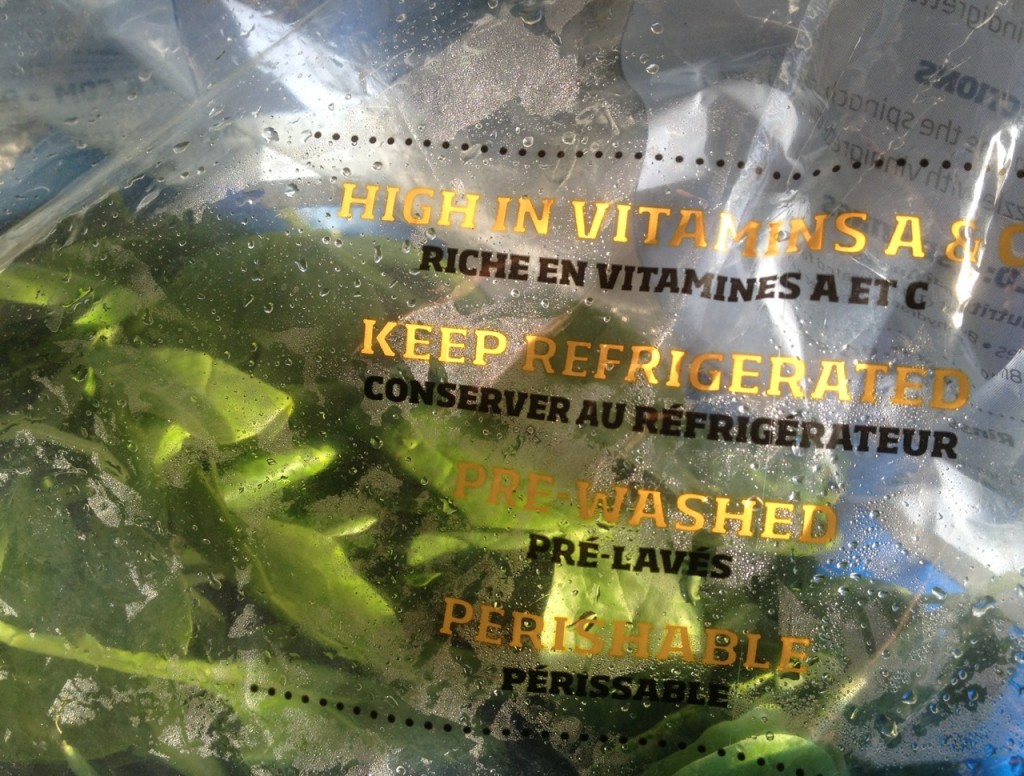
A huge bag of organic spinach from Costco lasted us for days.
Here is the Bumpus scene in case you need the Christmas Story reference



